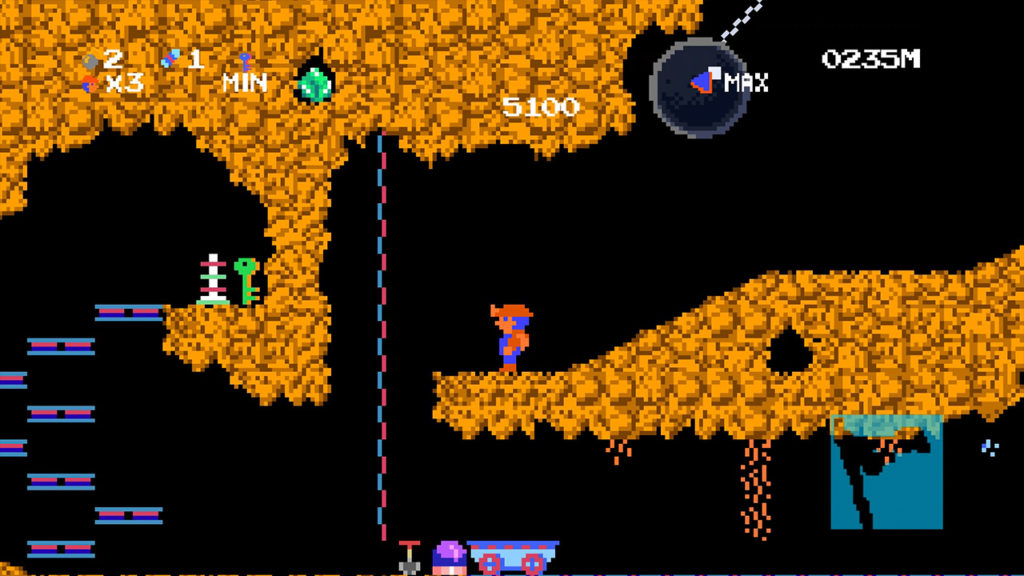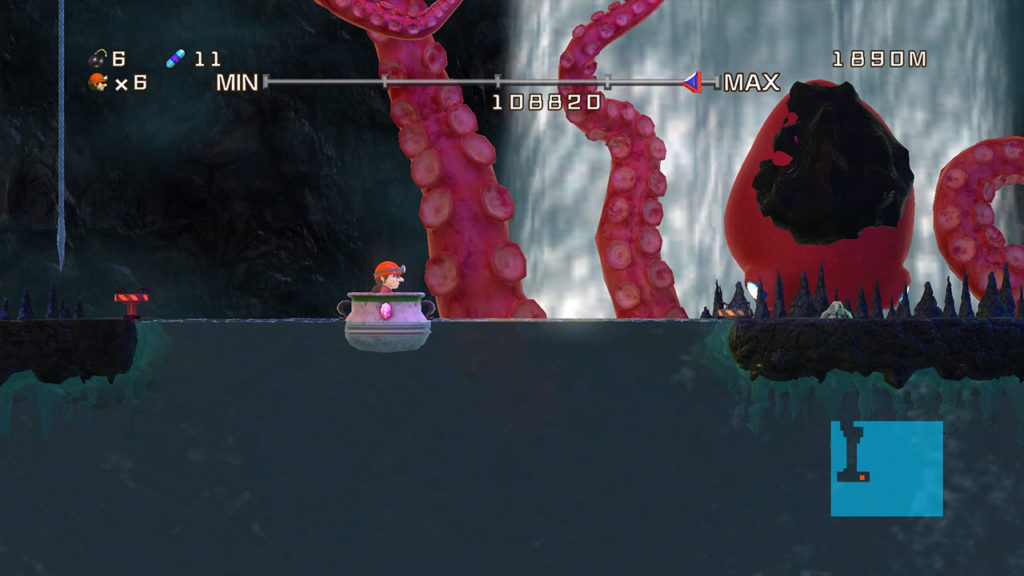Ah, Spelunker, one of the golden oldies of the Atari and Commodore 64 era – and it’s been completely overhauled for the Nintendo Switch. Does the sleek new visuals and gameplay help with beating the test of time? Let’s find out and dig in!
Spelunker
Spelunker was originally released in 1983 as a platform video game developed by Timothy G. Martin of MicroGraphic Image. It is set in a colossal cave, with the player starting at the cave’s entrance at the top, and the objective is to get to the treasure at the bottom. Originally released by MicroGraphic Image for the Atari 8-bit family in 1983, the game was later ported to the Commodore 64 and re-released by Broderbund in 1984, with European publishing rights licensed to Ariolasoft.
It was released on arcade in 1985, on the Nintendo Entertainment System on December 6, 1985, in Japan and September 1987 in North America, and on the MSX in 1986. A sequel was released in arcades in 1986 called Spelunker II: 23 no Kagi, and a different sequel for the NES on September 18, 1987, called Spelunker II: Yūsha e no Chōsen, both by Irem and in Japan only. Luckily we live in 2021, and we can see reworks and remasters of old-school classics like Spelunker.
Gameplay
The player must walk and jump through increasingly challenging parts of the cave while working with a finite supply of fresh air, which can be replenished at various points. Sounds easy enough, right? Well, if you like speedrunning platforming games, you’ll be in for a challenge.
The cave’s hazards include bats, which drop deadly guano on the player, and a ghost haunting the cave, randomly appearing to take the player to the shadow world. The player character can send a blast of air to push the ghost away. However, this renders the player’s character immobile for a few seconds, thus vulnerable to other dangers and further depleting their air supply. Objects to collect include sticks of dynamite, flares, and keys. Precise positioning and jumping are key factors in completing the game. Each miscalculated step or jump might be the end of your journey – with a sarcastic obituary to congratulate the fact you died.
The cave is divided into six levels. Although the levels connect seamlessly to each other, forming one large map, the game clearly signals a level change at certain points by showing the name of the next level and giving the player a bonus, consisting of extra lives and a varying number of points. Once a player completed all six levels, a new cave will be started with the same layout but with increasing difficulty. There are six caves in total. While using the same game and scenery elements, the NES and MSX levels (shared with the Wii and 3DS versions) are far smaller than the Atari/C64 levels. The Arcade version uses additional game elements (such as shooting and scuba diving) and has an original level design; Luckily, the devs included these final functions in Spelunker HD as well!
Graphics
Another added function is to switch between the old-school graphics of the 8-bit era and the upgraded HD version. I tried both, and they offer a different kind of challenge, so it’s best to see what works for your playstyle. Next to scaling caves, the game added Competition and Champion mode, which features online scoreboards in which you can challenge your friends and foes. If you want more challenges, you can always opt for the Infinite Cave NEO, a randomly generated endless cavern.
Conclusion
So to conclude, Spelunker HD Deluxe offers the best package for this ‘golden oldie’ that still lives up to its name. It offers challenge combat and exploration, combined with 8-bit platforming action. It makes Mario and other platforming games from the NES era look like a walk in the park. The upgraded visuals make the game easier to navigate since hazards are better identifiable but still give you a headache when jumping a little too early.






